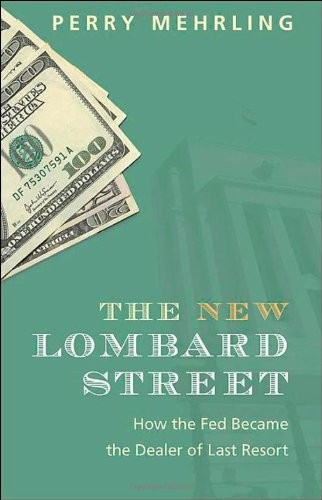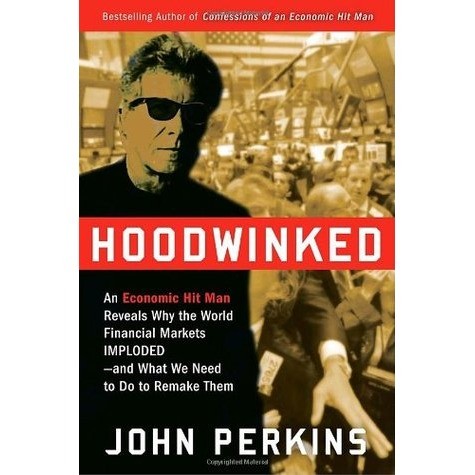The Myth of the Rational Market Wall Street s Impossible Quest for Predictable Markets by Justin Fox
Post on: 14 Август, 2015 No Comment

The Myth of the Rational Market: Wall Street’s Impossible Quest for Predictable Markets 3.79 of 5 stars 3.79 rating details 1,050 ratings 80 reviews
Chronicling the rise and fall of the efficient market theory and the century-long making of the modern financial industry, Justin Fox’s The Myth of the Rational Market is as much an intellectual whodunit as a cultural history of the perils and possibilities of risk. The book brings to life the people and ideas that forged modern finance and investing, from the formative Chronicling the rise and fall of the efficient market theory and the century-long making of the modern financial industry, Justin Fox’s The Myth of the Rational Market is as much an intellectual whodunit as a cultural history of the perils and possibilities of risk. The book brings to life the people and ideas that forged modern finance and investing, from the formative days of Wall Street through the Great Depression and into the financial calamity of today. It’s a tale that features professors who made and lost fortunes, battled fiercely over ideas, beat the house in blackjack, wrote bestselling books, and played major roles on the world stage. It’s also a tale of Wall Street’s evolution, the power of the market to generate wealth and wreak havoc, and free market capitalism’s war with itself.
Community Reviews
Recommends it for: Anyone
I had a lot of thoughts about what to say as I was reading this book, but I’ve let a couple of weeks go by and am straining to recall the points and themes I wanted to include. This isn’t the book’s fault: I found it engaging, informative and highly readable. No, I just let other events that life creates bump it off my priority list.
This book (The Myth Of The Rational Market: A History of Risk, Reward, and Delusion on Wall Street ) primarily deals with two things: people and an idea.
The people ar
I had a lot of thoughts about what to say as I was reading this book, but I’ve let a couple of weeks go by and am straining to recall the points and themes I wanted to include. This isn’t the book’s fault: I found it engaging, informative and highly readable. No, I just let other events that life creates bump it off my priority list.
This book (The Myth Of The Rational Market: A History of Risk, Reward, and Delusion on Wall Street ) primarily deals with two things: people and an idea.
The people are thinkers, students, doctors of economics, mathematics, physics, finance, and business, and professors of those same disciplines. Many began as academics, but consulted for think-tanks or businesses, or created companies to exploit their own theories and work product.
The idea, at is most basic, is that the “market” (e.g. bond market, stock market, commodities market) is efficient. “Efficient” means that in some semi-autonomous way the price that an object (bond, share of stock, option on soybeans) commands is an accurate reflection of its true underlying value and risks. (Don’t sue me on the explanation.) “Efficient” also means that if an objects price is pushed away from its “correct” price, market participants will correct that price and make money doing so. (Not quite the “invisible hand” of Adam Smith, but you get the gist.)
Over the years I had read a number of books on financial institutions, markets, trading systems, history, and finance itself. Many were good or average; one (on how to value companies/socks) was the driest book going, but I slogged through it. This book was excellently written and a pleasure to read. I’ll cut to the chase for those who don’t want any further details: Four and one-half (4.5) Stars.
Now back to the book.
Mr. Fox writes cleanly, lucidly, and with humor and sensitivity. He is also a very, very good researcher. As he says in his introduction, this is not a book of biographies. It is a book that is full of people, but insofar as they add to the over-arching development of the idea. (He does give sufficient background for many of the people so those unfamiliar with the individuals can understand their perspectives and motivations better.) And as Captain Renault says in Casablanca, Mr. Fox has rounded up all the usual suspects.
For those who did not have any particular interest in “the dismal science” until the collapse and Great Recession, the author also establishes who fits where and what schools of thought developed economics during the last 100+ years. So, if you never knew what “The Chicago School” meant (other than perhaps Milton Freidman was part of it), you will now. It may not be genius, but the way in which the author ties the various players and their schools, publications, and businesses together makes the story sensible to everyman.
In only 320 pages, this book covers more than a century and fifty of the most important and influential (often years or decade after their writings and/or deaths) “economists”, including many winners of the Nobel Prize in Economics. As I was reading, I kept a few page references as reminders.
Irving Fisher wrote popular books & articles, founded a company that provided pricing information to newspapers, and proposed linking bond interest rates to inflation rates in 1911. (The US Treasury did so with “TIPS” eight decades later.) He also wanted to index stocks instead of average them (as the Dow Jones Industrial 30 does). In 1923 one company began to use market capitalization weights to create the forerunner of the S&P 500 stock index. He also suggested that indexes might ne how individual investors would want to sell & buy stocks – in 1912!
Pages 55-57:
As post-war mathematical tools became more powerful (running on electronic machines that could do thousands of calculations per second) people began to apply these tools to the “rules of thumb” that were used by professional investors. It wasn’t easy or obvious, but it led to “quantitative finance”. At is heart was both statistics and the dilemma of how to asses these “rules”. Harry Markowitz was one of the early men to approach this problem, but in doing so he assumed that the investor was a rationale man.
After the whirlwind of investing that was the early-to-mid 1960s, the stock market was stagnant until the mid 80’s. Three researchers, Michael Jensen, Bill Sharpe, and Jack Treynor, had found evidence that those who had made insane profits during the good years were not geniuses, just people taking huge/insane investment risks. To copy a quote: “Many academics have concluded that the value of investment advice is virtually zero,” Burton Malkiel and a Princeton colleague wrote in 1968.

This was part of the evidence that “unmanaged” (i.e. based on an index), low-cost mutual funds might be a sound idea. It would still take another decade to get one started.
America learned a great lesson during and after the debacle of the Great Depression. (Including how a central bank should not respond.) For four decades financial risk (meaning systemic financial risk to individuals, institutions, and the country) was minimized by limiting what “bets” could be made and who could make them. As the “good times” kept rolling, the desire for more types of investments grew. And so, “derivatives” were conceived.
Pages 239-241:
Who can forget the Black-Scholes (also called Black-Scholes-Merton) Pricing Model and the company that it spawned, Long-Term Capital Management? Of course nowadays the name is a bit of a joke, as it didn’t last long enough to have been considered “long-term” in anyone’s lexicon! (That is unless you were one of the less-than-one-percenters like me whose taxes helped bail out the financial system when Russia defaulted and LTCM and all of its counterparties and imitators were suffering themselves.) Harry Markowitz (remember Harry from page 56?) saw that LTCM was using his methods to analyze risks and opportunities, but what they had missed was that they were so big that they “perturbed” the markets.
As I wrote before, this is chock full of characters. Some are household names and some are not. Some are commonplace for their success and awards, others for great service and positions of power, and others because of notoriety both in and out of finance. Charles Dow, Milton Friedman, John Bogle, Larry Summers, Paul Samuleson, Fredrick Hayek, and even Jon von Neumann will be found in these pages. Also, one will read about Warren Buffet and Robert Schiller (he of the Case-Schiller price index that I have been reading about and following for 25 years – congrats on his getting the Nobel this year) two of my personal favorites.
And one will also get to know Alan Greenspan, former chairman of the Federal Reserve a little better. Alan (I never met an asset class bubble I didn’t like) Greenspan who three years after stepping down and watching the financial crisis and its aftermath admitted to Congress and the world that he had put too much faith in the self-correcting power of free markets. Well, that’s not entirely true.
Did Greenspan do a good or bad job? It depends on how you look at things. It is true that he was the man that allowed and often encouraged serial asset class bubbles, but he did so in order to “soften” the collapse of the previous one. And he kept that game going for a fairly long time. He danced through the Asian Financial crisis (’97), the Y2K “crisis” (mostly by putting liquidity into the system which helped prolong the dot-coms), the Internet/Dot-com collapse, and so on. While he helped keep easy money available and used housing to keep the US economy going, Congress, banks, and other financial institutions used that latitude to grow our financial sector to monstrous proportions which eventually collapsed when the first few failures were leveraged into the entire system.
That’s not covered in this book, nor is there blame assigned. But what is covered will make you a wiser, smarter, and less trusting person when it comes to “experts”. The realization that innovations in investing methods and theories changed the very markets they were exploiting (or trying to) make seem like only hindsight, but really? Once a phenomenon that you were measuring disappears (and this happened several times during the 500-odd years at the heart of this book) doesn’t it give you a clue that you’ve changed the system? Harry Markowitz saw it (at least with respect to LTCM) why didn’t the rest of them?
One reason that the book supplies (suggests) is that as concepts went from paper or thesis to wider circulation and acceptance the caveats (or conditions) that the original author(s) included were left behind with only the unqualified theory being adopted. This process may be how all science is done, but with the economic theorists it happened very quickly (the adoption) and it was very polarized. In the end, it was the caveats that were shown to matter the most.
Read the book. It’s good, you’ll learn a lot and it has zero equations or charts. (Oh, I forgot to mention how egregious stock option awards and pay came out of financial theories – Read the book!)














